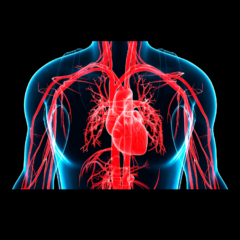Last updated on
A Look at Lymphedema
Updated January 2020
Lymphedema is a serious health issue that many people live with but it’s often misunderstood.
Lymphedema develops when lymph vessels or lymph nodes in the lymphatic system are missing or damaged. This causes lymph fluid to build up and creates swelling, typically in the arms and legs. However, it can be hard for providers to identify.
“Lymphedema is a disorder that unfortunately a lot of providers don’t have a lot of experience taking care of,” said Dr. Gregory Piazza, cardiovascular medicine specialist at Brigham and Women’s Hospital. “They might be able to pick out elephantiasis, but may miss the subtler forms of lymphedema.”
In recent years, there have been many new developments in the lymphedema space.
“There hasn’t, until recently, been a lot of research into why patients develop lymphedema and what genes are involved,” explained Dr. Piazza. “Recently, several genes have been identified that contribute to lymphedema at birth or in young patients. Researchers have come to understand that any gene affecting the development of the lymph vessels or lymph nodes can lead to lymphedema.”
Clinicians now have a better understanding of why people develop lymphedema and what types of risk factors can predispose patients to it. These risk factors include radiation, recurrent infections to the limbs, cancer surgeries, injury, trauma, and genetics. Patients who’ve had deep vein thrombosis (DVT) are also at a higher risk of developing severe venous insufficiency (impaired function in the leg veins) and eventually lymphedema.
“If you ask most clinicians how to treat lymphedema, they’ll say ‘I don’t think there is much we can do about it,’ but there’s actually quite a bit you can do,” Dr. Piazza said. “Compression garments make a big difference. When the limb is too big to fit a compression garment, we’ll do a type of physical therapy called manual lymphatic decompression. This is a gentle type of massage that activates the surface lymph vessels and gets them contracting on their own. There are also wraps that can be put on between physical therapy sessions to continue the ‘milking’ of the lymphatic fluid back to the patient’s central lymphatic system. Finally, there are some experimental treatments that look quite promising. For example, liposuction actually seems to work. There are also other treatments that involve transplanting lymph nodes into limbs to help clear out the lymph fluid.”
The bottom line? Lymphedema is a common disease that primary care doctors, cardiovascular specialists, and other providers will come into contact with, so it’s important to be up-to-date on the current trends involved in diagnosing and treating the condition.



